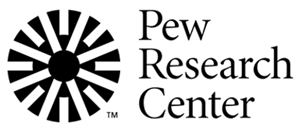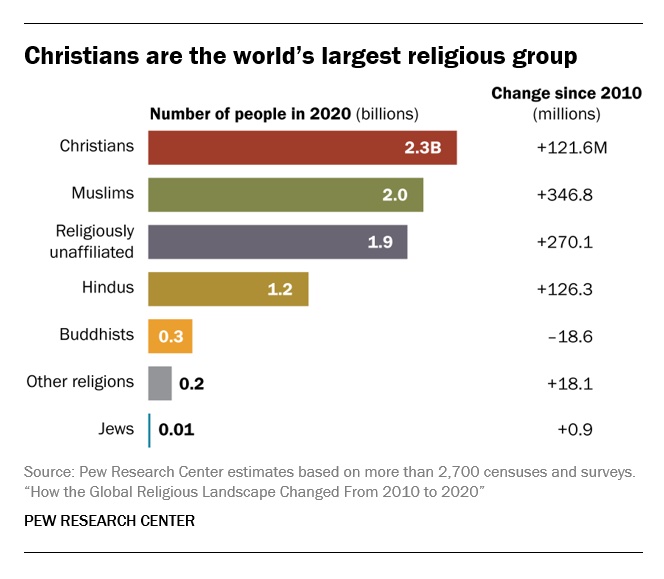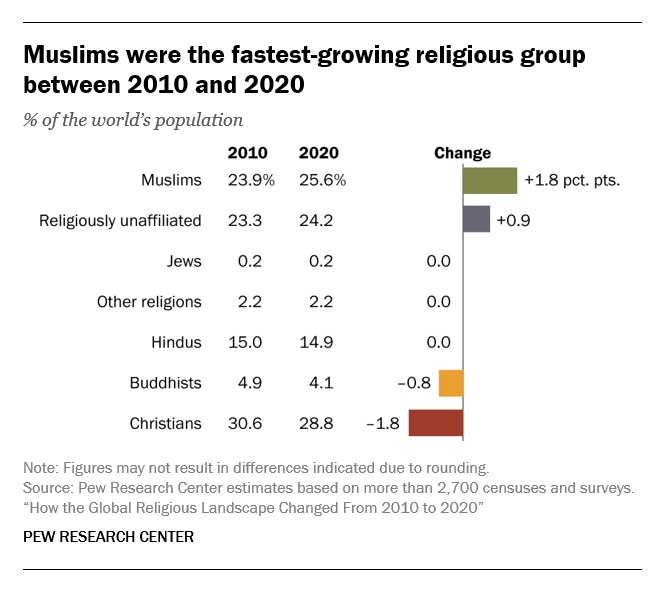Uncategorized
How a Catholic university amassed a treasure trove of Jewish artifacts from the Bronx
(New York Jewish Week) – A Catholic university may be the unlikeliest place for what may be the largest depository dedicated to the Jewish history of the Bronx.
But at Fordham University — the private, Jesuit institution in the Bronx — decades worth of archival documents and artifacts from the local Jewish community have found a home, thanks to its Jewish studies department.
For the last three years, Fordham has been collecting and cataloging items that detail a once-thriving Jewish community in the Bronx: yearbooks full of Jewish last names, Bar Mitzvah invitations, phonebooks full of Jewish-owned businesses — all the simple transactions that define an era in history.
The archive at Fordham is one of the only physical collections of everyday material from Jewish residents of the borough, according to Magda Teter, the chair of the Center for Jewish Studies at the university, who spearheaded the project.
“It’s not only preserving a piece of New York Jewish history, but also a way of life,” Teter told the New York Jewish Week. “Bringing this voice to the dominant Christian identity of Fordham and teaching about Jews [as a minority] within the dominant cultures is very important.”
A song and dance book in the Fordham University collection features the lyrics for “Hatikvah” and “For He’s a Jolly Good Fellow,” and a “Jewish dictionary.” (Julia Gergely)
During the first half of the twentieth century, Jewish life thrived in the Bronx. There were 260 registered synagogues in 1940, and the borough produced some of the biggest Jewish names in show business, fashion, literature and more: designer Ralph Lauren, politician Bella Abzug, novelist E.L. Doctorow, filmmaker Stanley Kubrick, Miss America Bess Myerson, Nobel Prize-winning chemist Robert Lefkowitz.
At the community’s peak in 1930, the Bronx was approximately 49% Jewish, according to the borough’s official historian, Lloyd Ultan. South of Tremont Avenue, the number reached 80%. Most of the Jewish Bronx was of Eastern European descent; many were first generation Americans whose parents had immigrated and lived on the Lower East Side, but who could now afford to live in less cramped neighborhoods with more trees and wider streets.
Though there is a strong Jewish community in the neighborhood of Riverdale, most of the Jewish community moved out of the Bronx for the suburbs after World War II when mortgages for white would-be homeowners were being subsidized by the government and Blacks and Latinos were steered to Bronx neighborhoods they couldn’t afford or that the city had chosen to neglect. The Jewish population of the Bronx dropped from 650,000 in 1948 to 45,000 in 2003. Many of the synagogues have been converted for other uses, and the physical legacy of the Jewish community there has begun to erode over time, making an archive all the more necessary.
While Teter was always interested in collecting items from the Jewish Bronx, the archive got an unexpected boost from a member of the public. In the spring of 2020, at the height of the pandemic, Fordham hosted a virtual event, “Remnants: Photographs of the Jewish Bronx,” which featured evidence of the area’s faded Jewish history gathered by writer and photographer Julian Voloj. (Voloj is the husband of the New York Jewish Week’s managing editor, Lisa Keys.)
An invitation for the bar mitzvah of Freddie Rothberg, which took place on Oct. 6, 1951 at Beth Hamedrash Hagadol. (Julia Gergely)
In the audience was Ellen Meshnick, who had grown up in New York and now lives in Georgia. Inspired, she offered Fordham a trove of material her parents, Frank and Martha Meshnick, had kept throughout their lives in the Bronx. The boxes included donated yearbooks from Morris High School and Walton High School, songbooks, bar mitzvah invitations, a marriage certificate, receipts for a flower delivery — even a document from the hospital from when she was born — mostly from the 1930s through the 1960s.
The donation significantly bolstered what materials Fordham already had on hand, which included less personal but still unique items like matchbooks from kosher restaurants. Now, Teter is growing the archive through other private donations and occasionally by purchasing materials online — personal family archives, books about Bronx Jewish history, songsheets and the like.
The marriage certificate, or ketubah, recognizing the marriage between Frank Meshnick and Martha Farber on Aug. 23, 1942. The certificate was part of an archive donated to Fordham University by the couple’s daughter Ellen. (Julia Gergely)
“They may not be the most beautiful things, but we are interested in what people actually used and lived with,” Teter said.
Teter said that while the American Jewish Historical Society in Manhattan does collect the types of quotidian and personal items that American Jews kept with them in the last few centuries, they don’t have much that uniquely focuses on Jewish life in the Bronx.
The entire collection is part of a greater effort by Teter, the Jewish studies department and the librarians at Fordham to increase awareness about Judaism and Jewish people. “I will not hide that I think it’s an important way to fight antisemitism — to teach Jewish history and Jewish culture in all its colors and in all its experiences,” she said. “It enriches the students’ appreciation and understanding of Jewish life beyond how Jews are usually portrayed.”
The Jewish studies department at Fordham is relatively new: The college began offering a Jewish studies minor in 2016, and opened the department in 2017. At the time, the highlight of the library’s archives was the Rosenblatt Holocaust collection, which was funded by an alumnus. Since 1992, the library has amassed over 11,000 titles, videos and artifacts on the Holocaust, according to librarian Linda Loschiavo.
When Teter arrived, Loschiavo worked with her to bring in historical Passover haggadahs from all over the world. Fordham now possesses two Italian haggadahs from the 1660s, as well as Jewish artifacts from unexpected places, like playbills from Jewish Bollywood.
Last month the university opened the Henry S. Miller Judaica Research Room on the fourth floor of the campus’ main library — named for Fordham’s first Jewish student, who graduated in 1968. Miller, a leader of a financial restructuring firm, is now a trustee of the college.
Fordham President Tania Tetlow described herself jokingly as “a wannabe Jew” at the room’s unveiling. “I’ve understood how deeply intertwined Judaism and Catholicism are,” she said, “and the connections we have of the deep intellectualism of both faiths, of the desire to study text and the interpretation of text going back for thousands of years, of the love of ritual — and the central place of food and guilt!”
The former Jacob Schiff Center on Valentine Avenue. (Julian Voloj)
“At the moment, we envision that the research room will be a space for exhibitions that would foster the curatorial skills of our students and that will bring Jewish art and artists to campus,” Teter said. “We would now be able to display their art and combine the exhibitions with some items from the Judaica collection.”
The research room is currently displaying Voloj’s Bronx photographs, along with some of the recently acquired local archival materials, curated by sophomore Reyna Stovall, who is interning in Fordham’s Jewish studies department this semester.
“It is really, really rewarding,” said Stovall, who is Jewish. Stovall became involved in the Jewish studies department because of her interest in Holocaust studies, but as she began her internship, she was excited to work on the archives cataloging the once thriving Jewish history of the Bronx.
The yearbook photo of Frank Meshnick (bottom right), who graduated from Morris High School in Morrisania in 1931. (Julia Gergely)
“It’s pretty amazing that they have the collection to begin with,” she added. “It really shows Fordham’s commitment to diversity and inclusivity that they’re willing to take on this massive collection of Judaica, even though that’s not the religion that the school was founded on.”
Teter estimates there are about 300 Jews among the school’s 15,000 undergrads. As a result, the Center for Jewish Studies and the research room offers students from all backgrounds the opportunity to learn more about Judaism — as well as marginalized communities in general, and connect their stories to their own lives.
“Our identity grew to showcase Jewish studies at the intersection and in conversation with other fields and areas of study,” Teter explained.
The Center’s goal, she added, is “to make students, faculty and the public realize that studying Jews is not just for Jews, and that they can learn so much about the areas of their own concern and interest by studying Jews.”
“Something magical happens when you give students the opportunity to work with historical artifacts, and really touch history,” Teter said. “That’s what I think inspired the director of the library to devote that space to that kind of research and to that kind of student experience.”
—
The post How a Catholic university amassed a treasure trove of Jewish artifacts from the Bronx appeared first on Jewish Telegraphic Agency.
Uncategorized
How the Global Religious Landscape Changed from 2010 to 2020

Muslims grew fastest; Christians lagged behind global population increase
• Christians are the world’s largest religious group, at 28.8% of the global population. They are a majority everywhere except the Asia-Pacific and Middle East-North Africa regions. Sub-Saharan Africa has surpassed Europe in having the largest number of Christians. But Christians are shrinking as a share of the global population, as millions of Christians “switch” out of religion to become religiously unaffiliated.

• Muslims are the world’s second-largest religious group (25.6% of the world’s population) and the fastest-growing major religion, largely due to Muslims’ relatively young age structure and high fertility rate. They make up the vast majority of the population in the Middle East-North Africa region. In all other regions, Muslims are a religious minority, including in the Asia-Pacific region (which is home to the greatest number of Muslims).

• The religiously unaffiliated population is the world’s third-largest religious category (24.2% of the global population), after Christians and Muslims. Between 2010 and 2020, religiously unaffiliated people grew more than any group except Muslims, despite their demographic disadvantages of an older age structure and relatively low fertility. The unaffiliated made up a majority of the population in 10 countries and territories in 2020, up from seven a decade earlier.
• Hindus are the fourth-largest religious category (14.9% of the world’s population), after Christians, Muslims and religiously unaffiliated people. Most (99%) live in the Asia-Pacific region; 95% of all Hindus live in India alone. Between 2010 and 2020, Hindus remained a stable share of the world’s population because their fertility resembles the global average, and surveys indicate that switching out of or into Hinduism is rare.
• Buddhists (4.1% of the world’s population) are the only group in this report whose number declined worldwide between 2010 and 2020. This was due both to religious disaffiliation among Buddhists in East Asia and to a relatively low birth rate among Buddhists, who tend to live in countries with older populations. Most of the world’s Buddhists (98%) reside in the Asia-Pacific region, the birthplace of Buddhism.
• Jews, the smallest religious group analyzed separately in this report (0.2% of the world’s population), lagged behind global population growth between 2010 and 2020 – despite having fertility rates on par with the global average – due to their older age structure. Most Jews live either in North America (primarily in the United States) or in the Middle East-North Africa region (almost exclusively in Israel).
These are among the key findings of a Pew Research Center analysis of more than 2,700 censuses and surveys, including census data releases that were delayed due to the coronavirus pandemic. This report is part of the Pew-Templeton Global Religious Futures project, which analyzes global religious change and its impact on societies around the world. Funding for the Global Religious Futures project comes from The Pew Charitable Trusts and the John Templeton Foundation.
Uncategorized
Antisemitism in some unlikely places in America

By HENRY SREBRNIK Antisemitism flourishes in a place where few might expect to confront it – medical schools and among doctors. It affects Jews, I think, more emotionally than Judeophobia in other fields.
Medicine has long been a Jewish profession with a history going back centuries. We all know the jokes about “my son – now also my daughter – the doctor.” Physicians take the Hippocratic Oath to heal the sick, regardless of their ethnicity or religion. When we are ill doctors often become the people who save us from debilitating illness and even death. So this is all the more shocking.
Yes, in earlier periods there were medical schools with quotas and hospitals who refused or limited the number of Jews they allowed to be affiliated with them. It’s why we built Jewish hospitals and practices. And of course, we all shudder at the history of Nazi doctors and euthanasia in Germany and in the concentration camps of Europe. But all this – so we thought – was a thing of a dark past. Yet now it has made a comeback, along with many other horrors we assume might never reappear.
Since the Hamas attack on Israel on October 7, 2023, there has been a resurgence of antisemitism, also noticeable in the world of healthcare. This is not just a Canadian issue. Two articles on the Jewish website Tablet, published Nov. 21, 2023, and May 18, 2025, spoke to this problem in American medicine as well, referencing a study by Ian Kingsbury and Jay P. Greene of Do No Harm, a health care advocacy group, based on data amassed by the organization Stop Antisemitism. They identified a wave of open Jew-hatred by medical professionals, medical schools, and professional associations, often driven by foreign-trained doctors importing the Jew-hatred of their native countries, suggesting “that a field entrusted with healing is becoming a licensed purveyor of hatred.”
Activists from Doctors Against Genocide, American Palestinian Women’s Association, and CODEPINK held a demonstration calling for an immediate cease-fire in Gaza at the Hart Senate Office Building in Washington, D.C., Nov. 16, 2023, almost as soon as the war began. A doctor in Tampa took to social media to post a Palestinian flag with the caption “about time!!!” The medical director of a cancer centre in Dearborn, Michigan, posted on social media: “What a beautiful morning. What a beautiful day.” Even in New York, a physician commented on Instagram that “Zionist settlers” got “a taste of their own medicine.” A Boston-based dentist was filmed ripping down posters of Israeli victims and a professor at the University of Pennsylvania Perelman School of Medicine did the same. Almost three-quarters of American medical associations felt the need to speak out on the war in Ukraine but almost three-quarters had nothing to say about the war in Israel.
Antisemitism in academic medical centres is fostering noxious environments which deprive Jewish healthcare professionals of their civil right to work in spaces free from discrimination and hate, according to a study by the Data & Analytics Department of StandWithUs, an international, non-partisan education organization that supports Israel and fights antisemitism.
“Academia today is increasingly cultivating an environment which is hostile to Jews, as well as members of other religious and ethnic groups,” StandWithUs director of data and analytics, and study co-author, Alexandra Fishman, said on May 5 in a press release. “Academic institutions should be upholding the integrity of scholarship, prioritizing civil discourse, rather than allowing bias or personal agendas to guide academic culture.”
The study, “Antisemitism in American Healthcare: The Role of Workplace Environment,” included survey data showing that 62.8 per cent of Jewish healthcare professionals employed by campus-based medical centres reported experiencing antisemitism, a far higher rate than those working in private practice and community hospitals. Fueling the rise in hate, it added, were repeated failures of DEI (diversity, equity, and inclusion) initiatives to educate workers about antisemitism, increasing, the report said, the likelihood of antisemitic activity.
“When administrators and colleagues understand what antisemitism looks like, it clearly correlates with less antisemitism in the workplace,” co-author and Yeshiva University professor Dr. Charles Auerbach reported. “Recognition is a powerful tool — institutions that foster awareness create safer, more inclusive environments for everyone.”
Last December, the Data & Analytics Department also published a study which found that nearly 40 per cent of Jewish American health-care professionals have encountered antisemitism in the workplace, either as witnesses or victims. The study included a survey of 645 Jewish health workers, a substantial number of whom said they were subject to “social and professional isolation.” The problem left more than one quarter of the survey cohort, 26.4 per cent, “feeling unsafe or threatened.”
The official journal of the Alliance for Academic Internal Medicine concurs. According to “The Moral Imperative of Countering Antisemitism in US Medicine – A Way Forward,” by Hedy S. Wald and Steven Roth, published in the October 2024 issue of the American Journal of Medicine, increased antisemitism in the United States has created a hostile learning and practice environment in medical settings. This includes instances of antisemitic behaviour and the use of antisemitic symbols at medical school commencements.
Examples of its impact upon medicine include medical students’ social media postings claiming that Jews wield disproportionate power, antisemitic slogans at the University of California, Los Angeles (UCLA) David Geffen School of Medicine, antisemitic graffiti at the University of California, San Francisco (UCSF) Cancer Centre, Jewish medical students’ exposure to demonization of Israel diatribes and rationalizing terrorism; and faculty, including a professor of medicine at UCSF, posting antisemitic tropes and derogatory comments about Jewish health care professionals. Jewish medical students’ fears of retribution, should they speak out, have been reported. “Our recent unpublished survey of Jewish physicians and trainees demonstrated a twofold increase from 40% to 88% for those who experienced antisemitism prior to vs after October 7,” they stated.
In some schools, Jewish faculty are speaking out. In February, the Jewish Faculty Resilience Group at UCLA accused the institution in an open letter of “ignoring” antisemitism at the School of Medicine, charging that its indifference to the matter “continues to encourage more antisemitism.” It added that discrimination at the medical school has caused demonstrable harm to Jewish students and faculty. Student clubs, it said, are denied recognition for arbitrary reasons; Jewish faculty whose ethnic backgrounds were previously unknown are purged from the payrolls upon being identified as Jews; and anyone who refuses to participate in anti-Zionist events is “intimidated” and pressured.
Given these findings, many American physicians are worried not only as Jewish doctors and professionals, but for Jewish patients who are more than ever concerned with whom they’re meeting. Can we really conceive of a future where you’re not sure if “the doctor will hate you now?”
Henry Srebrnik is a professor of political science at the University of Prince Edward Island.
Uncategorized
The 2025 Toronto Walk (and talk ) for Israel

By GERRY POSNER There are walks and then there are walks. The Toronto UJA Walk for Israel on May 25, 2025 was one of a kind, at least as far as Canada and Jews are concerned. The number of people present was estimated to be 56,000 people or 112,000 total shoes. (How they get to that number is bewildering to me, since there is no one counting). This was 6,000 more than last year. Whether it is true or not, take it from me, it was packed. The synagogues in Canada should be so fortunate to get those numbers in total on High Holidays. The picture here gives you a sense of the size of the crowd.

This was my first walk in Toronto for Israel and I was with my granddaughter, Samantha Pyzer (not to forget her two friends whom she managed to meet at the site, no small feat, even with iPhones as aids). The official proceedings began at 9:00 a.m. and the walk at 10:00 a.m. There was entertainment to begin with, also along the way, and at the finish as well. The finish line this year was the Prosserman Centre or the JCC as it often called. The walk itself was perhaps 4 kilometres – not very long, but the walking was slow, especially at the beginning. There were lots of strollers, even baby carriages, though I did not see any wheelchairs. All ages participated on this walk. I figured, based on what I could see on the faces of people all around me that, although I was not the oldest one on the walk, I bet I made the top 100 – more likely the top 20.
What was a highlight for me was the number of Winnipeggers I met, both past and present. Connecting with them seemed to be much like a fluke. No doubt, I missed la lot of them, but I saw, in no particular order (I could not recall the order if my life depended on it): Alta Sigesmund, (who was, a long time ago, my daughter Amira’s teacher), Marni Samphir, Karla Berbrayer and her husband Dr. Allan Kraut and family. Then, when Samantha and I made it to the end and sat down to eat, I struck up a conversation with a woman unknown to me and as we chatted, she confirmed her former Winnipeg status as a sister-in- law to David Devere, as in Betty Shwemer, the sister of Cecile Devere. I also chanced upon Terri Cherniack, only because I paused for a moment and she spotted me. As we closed in near the finish, I met ( hey were on their way back), Earl and Suzanne Golden and son Matthew, as well as Daniel Glazerman. That stop caused me to lose my granddaughter and her pals. Try finding them amid the noise and size of the crowd – but I pulled it off.

As I was in line to get food, I started chatting with a guy in the vicinity of my age. I dropped the Winnipeg link and the floodgates opened with “ Did I know Jack and Joanie Rusen?” So that was an interesting few minutes. And I was not too terribly surprised to come across some of my Pickleball family. All of these meetings, along with spotting some of my sister’s family and other cousins, were carried on with the sound of the shofar as we moved along the way. In short, this was a happening. Merchants selling a variety of products, many of them Israeli based, were in evidence and, of course, the day could not have ended without the laying of tefillin, aided by Chabad, who have perfected the procedure to take less than a minute. See the photo. Chabad had a willing audience.
Aside from the joy of sharing this experience with my granddaughter, the very presence of all these Jews gathered together for a common reason made this day very special to me. However, there was a downside to the day. The downside was that, as we began to walk back to our car there was no other way I could figure out how to return when the rains came and came. While we walked faster, we were impeded by pouring rain and puddles. But Samantha wanted to persevere, as did I. We made it, but were drenched. My runners are still drying out as I write this two days later.
What with being surrounded by 56,000 people, the noise, the slow walking, and the rain, I can still say the day was a real highlight for me – one of the better moments since our arrival in Toronto in 2012. As well as the photos we took along the way, I have the reminder of the day, courtesy of the UJA, as evidenced from the photo. It was not just the walk, but the talk that accompanied the walk that made it so worthwhile for me. I would do it again, minus the rain.
